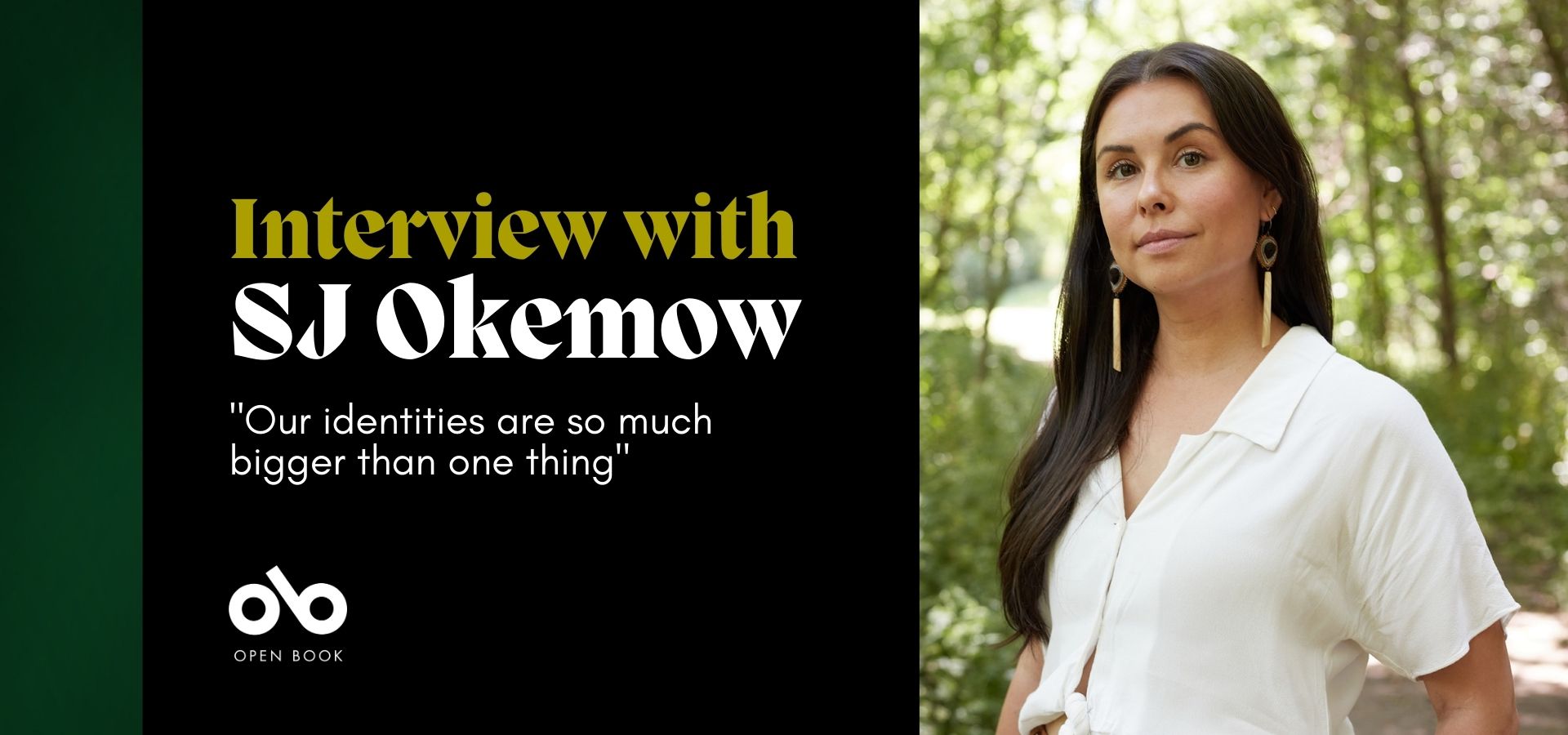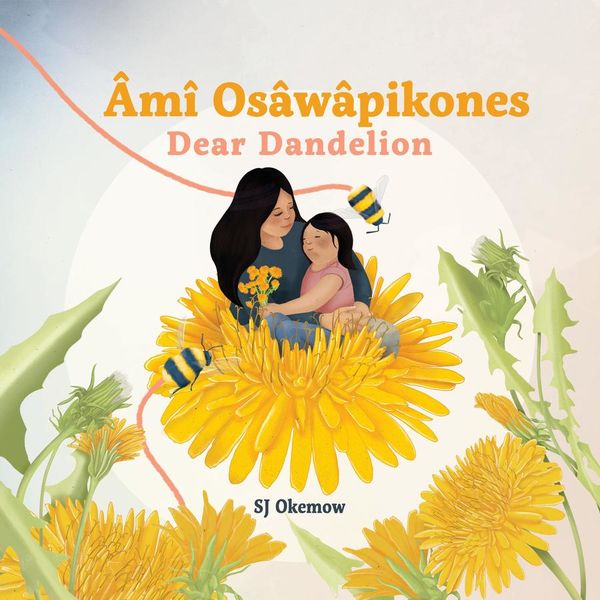SJ Okemow on Her Heartwarming Debut Picture Book's Unconventional Path to Publication
The humble dandelion rarely gets much love, often cited as a nuisance weed that spreads easily and takes over. But the hardy little plant has many lessons to teach us, and in SJ Okemow's Âmî Osâwâpikones (Annick Press), a child follows the so-called weed throughout the seasons to learn its secrets.
The title translates as Dear Dandelion, and the season cycle shows us that like the dandelion, we live in a world that is sometimes unwelcoming, and that resilience, health, and community (something the titular plant manages with ease) are good things, not faults. Celebrating self-care, healing, humour, and love, Âmî Osâwâpikones is a deeply charming, thoughtful debut.
The book, which weaves in the Nehiyaw language (known in English as the Cree language) also features Okemow's own artwork. The dreamy, soft colour pallet comes together with her lyrical writing to create a gentle but powerful narrative that challenges to readers to not let the opinions and perspectives of others define them.
We're speaking with SJ today about the book for our Kids Club series. She tells us about how a homecoming of sorts ended up inspiring the book, what writing for children and writing poetry have in common, and how she hopes the book will be a reminder for kids to not feel limited by themselves or others, but rather to "strive to be many different things".
Open Book:
Tell us about your new book and how it came to be.
SJ Okemow:
I started writing Osâwâpikones in April of 2019 during a Banff Centre residency guided by Monique Gray Smith, Amanda Strong, and Julie Flett. It wasn’t expressly necessary for us to write a children’s story, but I think I was inspired by the body of work produced by Monique and Julie, and I started to think more about the depth that exists within children's stories.
I moved away from Alberta when I was 17. Attending the Banff residency was the first longer amount of time that I had spent back home and I think it opened me to reflecting a lot on my childhood in Alberta, the things a younger me may have wished for and needed to feel more supported.
OB:
What's your favourite part of the life cycle of a book? The inspiration, writing the first draft, revision, the editorial relationship, promotion and discussing the book, or something else altogether? What's the toughest part?
SJO:
The first draft of Osâwâpikones was much shorter, having only had less a month to work on it in the residency. After I completed the residency, I went back to my full-time job and I hadn’t really thought much about publishing it. That draft sat on my hard drive for a couple years until I applied for an illustrating job at Annick Press and the original Osâwâpikones was a part of my portfolio. Mary Beth Leatherdale, who is an author and was then an editor at Annick, reached out to me to see if I might be interested in expanding it and having it published. I think I never really saw myself as a writer so it was so amazing and humbling to have other people see something in my work. It makes me think of all the stories sitting on Word docs on hard drives or scraps of writing in drawers that might never be seen.
OB:
Do you feel like there are any misconceptions about writing for young people? What do you wish people knew about what you do?
Your CanLit News
Subscribe to Open Book’s newsletter to get local book events, literary content, writing tips, and more in your inbox
SJO:
I think many people assume that because the text is shorter and the language is simpler that the concepts must themselves be simple. I think children's books hold so much depth and the layers of meaning must be that much stronger to be conveyed in a shorter time. I don’t write poetry but I do think there are similarities between the focus on language and intent. When the word count is limited, each word becomes more weighted.
OB:
Is there a message you hope kids might take away from reading your book?
SJO:
For me I think it’s that our identities are so much bigger than one thing. I think kids get asked what they want to be when they grow up as though they should have one defining answer. I hope they see they can and should strive to be many different things for themselves and for other people. Like the dandelion is a home, an energy source, and a friend to laugh with. The gifts we are and can be are limitless.
OB:
What are you working on now?
SJO:
I am currently working on finishing my PhD in Sydney at the University of New South Wales. It's been fun to see a completely different landscape and I’m trying to spend as much time as I can while I’m here hanging out with the birds and trees of Australia.
_________________________________________
SJ Okemow is a Nehiyaw and Eastern European multidisciplinary artist. This is her debut picture book. She lives in Toronto.




